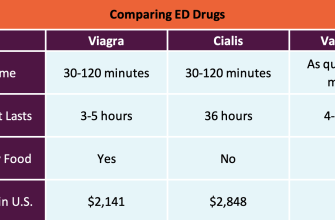Concerns about permanent vision loss after Viagra use are understandable. While rare, this side effect can occur. Let’s clarify: the risk is significantly higher with higher doses and pre-existing eye conditions. Regular check-ups with your ophthalmologist are crucial, especially if you experience any visual disturbances.
NAION (Non-arteritic anterior ischemic optic neuropathy) is the primary concern. This condition affects blood supply to the optic nerve, potentially leading to vision loss. Symptoms include blurred vision, loss of color vision, and even blindness in one eye. Seek immediate medical attention if you experience these symptoms after taking Viagra.
Prevention is key. Always adhere to your doctor’s prescribed dosage. Open communication with your physician about your medical history, including any pre-existing eye problems, is paramount. They can assess your risk and help you manage it effectively. Regular blood pressure and cholesterol checks are also recommended, as these factors can influence the risk of NAION.
Important Note: This information does not replace professional medical advice. If you have concerns about Viagra and vision loss, consult your doctor or ophthalmologist immediately. They can perform a thorough examination and provide personalized guidance.
Viagra and Vision Loss: Understanding the Risks
Rarely, Viagra (sildenafil) can cause vision problems. These are usually temporary, resolving within hours or days after stopping the medication. However, a small percentage of users experience more serious, potentially permanent, vision changes.
The most concerning side effect is Non-arteritic anterior ischemic optic neuropathy (NAION), a condition that reduces blood flow to the optic nerve, leading to vision loss. Men with pre-existing risk factors, such as glaucoma or high blood pressure, face a higher NAION risk with Viagra use.
Another potential side effect is transient blue vision, a temporary alteration in color perception. While usually mild and short-lived, it’s still important to report this to your doctor.
Before starting Viagra, discuss your complete medical history with your doctor, including any eye conditions or heart problems. This open communication helps identify potential risks and allows for informed decision-making. Your doctor can help assess your individual risk and determine if Viagra is the right treatment for you.
If you experience any sudden vision changes while using Viagra, stop taking the medication immediately and seek medical attention promptly. Early intervention is key to minimizing potential long-term consequences.
Remember, this information is for educational purposes only and does not constitute medical advice. Always consult a healthcare professional for personalized guidance.
Is Viagra-Induced Vision Loss Truly Permanent?
Usually, no. Viagra-related vision problems, while serious, are typically temporary for most men. NAION (Non-arteritic anterior ischemic optic neuropathy), the most concerning complication, often resolves within weeks or months. However, some degree of permanent vision loss is possible in rare cases.
The severity of vision loss depends on several factors including the individual’s overall health, the duration of Viagra use, and the promptness of medical intervention. Early treatment is key to minimizing potential long-term effects.
If you experience sudden vision changes after taking Viagra, seek immediate medical attention. This includes blurred vision, loss of color vision, or a decreased field of vision. A prompt diagnosis and appropriate management can significantly improve the chances of a full recovery.
While studies show a correlation between Viagra and NAION, the exact causal link remains a subject of ongoing research. Many factors contribute to this condition, and Viagra may be a contributing factor in some instances, not the sole cause.
Consult your doctor to discuss your risk factors and appropriate management strategies. Open communication is vital for safe and effective use of medication. They can help you weigh the potential benefits and risks before starting treatment.










